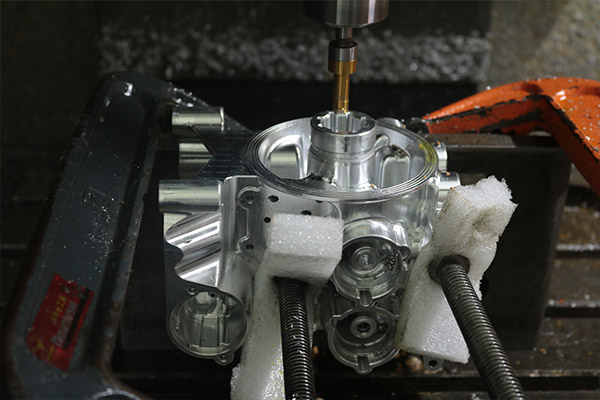Get in touch.
Dear,I will reply in 12 hours. All your message are protected!
Rapid Prototyping Services, Professional manufacturer of CNC Prototyping and 3D Prototyping in China.
CNC (Computer Numerical Control) machining is a versatile and precise manufacturing process that plays a crucial role in producing axial holes with exceptional accuracy. Whether you're working on mechanical components or complex assemblies, CNC machines offer the capabilities to create precise axial holes for various applications. In this article, we will explore the steps and best practices for machining axial holes using CNC technology.

1.Design and CAD Preparation:
Begin by creating a detailed 3D model of the part or assembly using CAD (Computer-Aided Design) software. Pay close attention to the design requirements for the axial holes, including size, orientation, and tolerance. Ensure that the CAD model accurately represents the desired hole dimensions and features.
2.CAM Programming:
Generate a CAM program using CAM (Computer-Aided Manufacturing) software based on the 3D model. Define the toolpaths, cutting parameters, and machining strategies specific to the axial holes. Consider factors such as hole diameter, depth, and surface finish requirements. Optimize the program to ensure precise and efficient machining.
3.Material Selection:
Select the appropriate material for the part or assembly based on its mechanical properties and functional requirements. Consider factors such as strength, durability, and compatibility with the intended application. Common materials used for machining axial holes include metals (such as steel, aluminum, or titanium) and various types of plastics. Choose a material that suits the specific application and machining requirements.
4.Tooling Selection:
Choosing the right cutting tools is crucial for machining axial holes. Consider the material type, hole diameter, and depth when selecting the tool's material, geometry, and coatings. Drill bits or end mills specially designed for hole-making operations are commonly used. Optimize tooling choices to achieve the desired precision and surface finish.
5.CNC Machine Setup:
Prepare the CNC machine for machining axial holes by installing the appropriate cutting tools and securing the part or assembly. Use fixtures or workholding devices specifically designed for hole-making operations to ensure stability and accuracy. Proper alignment and zeroing of the machine's axes are crucial to achieve precise tool movements and accurate hole machining.
6.Machining Process:
Execute the CNC program to start the machining process for the axial holes. The machine will automatically follow the programmed toolpaths to drill or mill the holes with precision. Monitor the process closely to ensure proper chip evacuation, cooling, and adherence to cutting parameters. Make adjustments as needed to achieve the desired hole quality and accuracy.
7.Quality Control:
Regularly inspect the machined axial holes to ensure accuracy and quality. Use precision measuring instruments such as calipers, micrometers, or coordinate measuring machines (CMMs) to verify dimensions, tolerances, and surface finish. Implement stringent quality control measures to identify and correct any issues during the production process.
8.Post-Machining Operations:
Depending on the specific requirements of the part or assembly, additional post-machining operations may be necessary. These can include deburring, cleaning, or surface treatments such as chamfering or threading. Ensure that these operations are performed meticulously to achieve the desired final product.
© 2005-2025 Shenzhen Tuowei Model Technologies Co., Ltd. | All Rights Reserved 粤ICP备11096697号